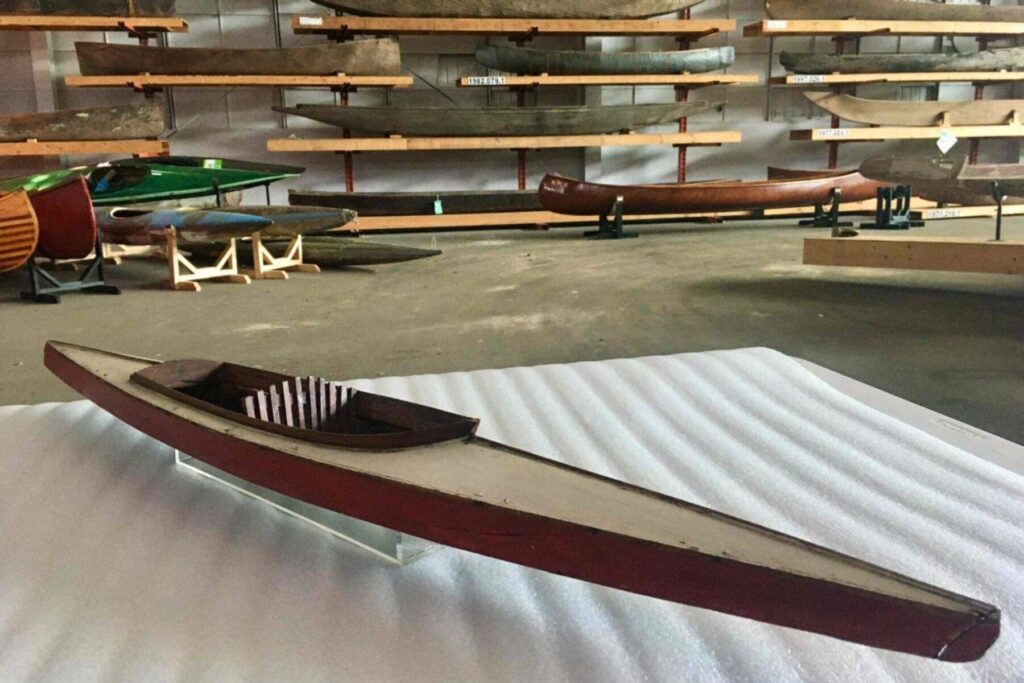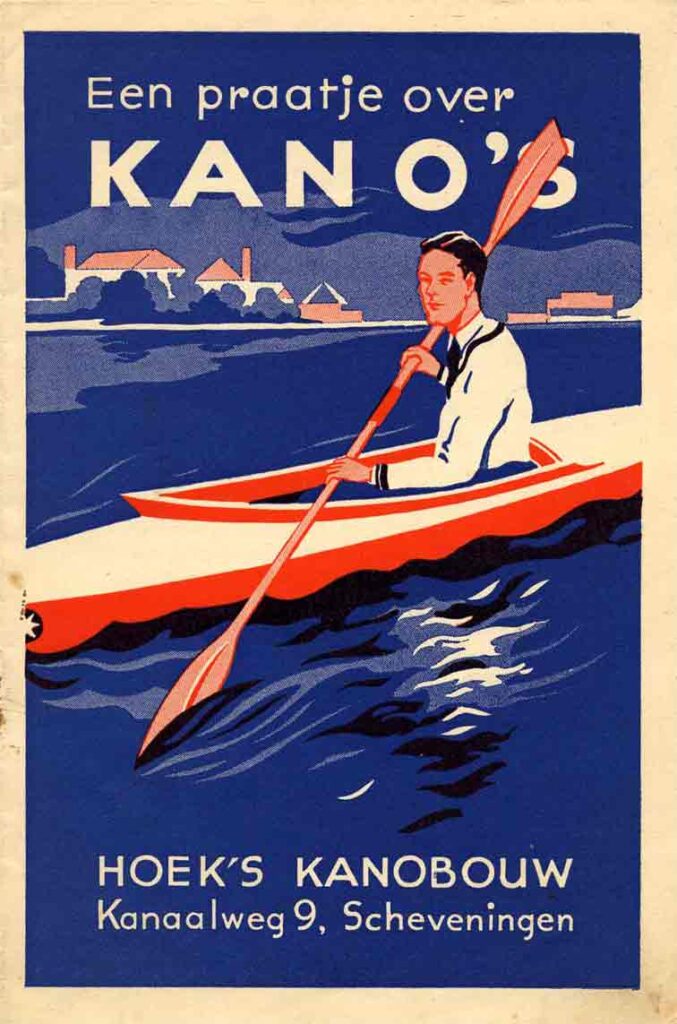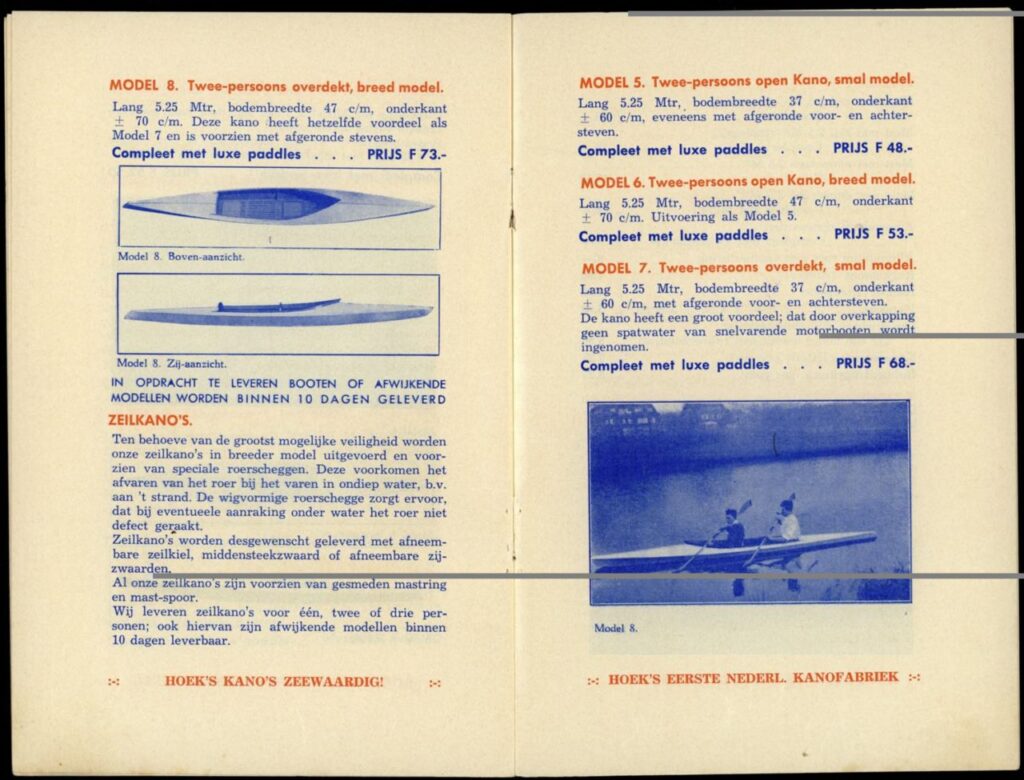
A few months before the pandemic circled the globe, a dear friend, collector and appraiser for the museum Roger Young, offered us this charming wooden model from his own collection.
What might be described as a recreational kayak, or in many parts of Europe as a kanu, this unusual artifact is finely constructed of planks fastened over wooden frames and it carries the hallmarks of early 20th century European tastes and manufacturing of paddled watercraft.
With just the remains of a few letters evident along the bow to offer clues, Vernon Doucette, a member of the museum’s Collections Committee, began searching through his (seemingly limitless) private archival collection in Nova Scotia. Vernon found catalogue pages that identify the model’s maker as Hoek’s Kanubouw (Hoek’s Canoe Mfg), located in the Sheveningen district of The Hague, Netherlands. Although undated, the promotional materials suggest circa 1930s manufacture.


Affectionately sometimes called “Salesman Samples”, such models are comparatively very rare and they offered a compact means to promote or showcase the construction and features of their offerings. In this particular case, longitudinal wooden boards were also used to represent the stretched cloth decks. Today, because of their scarcity and collectability, the fair market value of these models often far exceeds that of their full-size counterparts!
The Canadian Canoe Museum’s collection contains more than a dozen kanus made by different European manufacturers. One, quite similar in shape to this model, was made for pleasure by German POWs while interned at a lumber camp in northern Ontario during the Second World War.
The Canadian Canoe Museum extends a special thanks to Roger Young for the gift of this model and, as ever, to Vernon Doucette for archival research.






